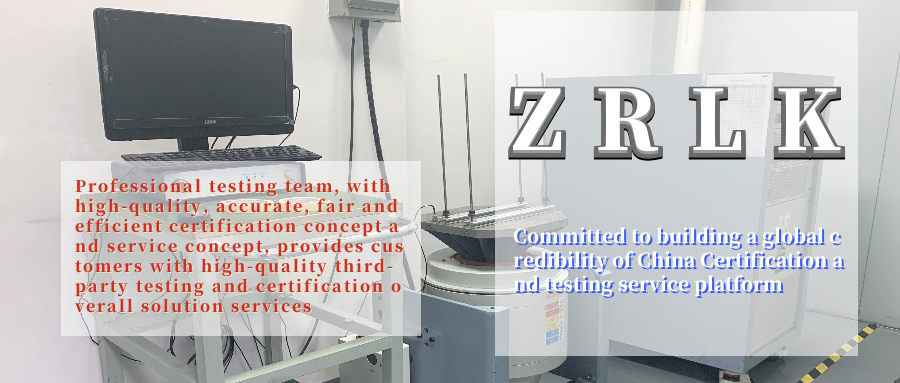
Introduction to VOC testing
Volatile Organic Compounds (Volatile Organic Compounds, referred to as "VOC") is an important reason to affect the air quality in the car. VOC mainly includes alkanes, alkenes, aromatic hydrocarbons, aldehydes or ketones, etc., has a special pungent odor, and some have been classified as carcinogens, such as vinyl chloride, benzene, polycyclic aromatic hydrocarbons, etc., some VOCs also damage the ozone layer Role, such as chlorofluorocarbons and hydrochlorofluorocarbons.
Nowadays, cars have entered thousands of households, and the problem of air pollution inside cars has become a hot spot for consumers. Automobile associations and related agencies in various countries have formulated air standards and requirements for cars to control the air quality in the cars. World-renowned car companies have also established their own corporate standards to control the air quality in the car.
VOC sources and hazards
Most of the VOCs in the car come from the paint after the paint in the car. In order to reduce the health hazards caused by the material VOC to the human body, China has vigorously developed environmentally friendly paint products in recent years. On January 26, 2015, it began to produce paints and other products. , Consignment processing and import links, a consumption tax is levied. Only paints with a VOC content of less than 420 g/liter (inclusive) under construction can be exempted from consumption tax.
When the concentration of VOC is too high, it is easy to cause acute poisoning. In mild cases, headache, dizziness, cough, nausea, and vomiting will occur; in severe cases, convulsions will occur, and the liver, kidneys, brain, and nervous system will be injured.
Medical research has proved that pregnant women living under the influence of VOC environment have a much higher probability of causing fetal malformations than normal people, and may have an impact on their children's future intellectual development.
Car standard reference
In-vehicle air VOC test
GB/T 27630-2011 Guidelines for Air Quality Assessment in Passenger Cars
HJ/T 400-2007 Sampling and determination method of volatile organic compounds and aldehydes and ketones in vehicles
Auto parts VOC test
Japan Automobile Manufacturers Association
JASO M 902-2007 Test method for volatile organic compounds (VOC) of automotive interior parts
Toyota cars
TSM0508G VOC sampling bag inspection method
Nissan
NES M0402 Test method for volatile organic compounds in automotive interior parts
Mazda
MES CF 090 automotive interior parts VOC testing method
Honda Motor
0094Z-T0A-0000 VOC detection method for automotive interior parts
General Motors
TS-BD-003 Test method for volatile organic compounds in car parts-bag method
Hyundai Motor
MS300-55 VOC emission test method for automotive interior parts
SUZUKI
SES N 2403 VOC emission control standard
Shanghai Auto
SMTC 5 400 018(V1) VOC test method for car interior parts (bag method)
Great Wall Motor
Q/CC SY248 Sampling and measuring method for volatile organic compounds and aldehydes and ketones of non-metal parts in vehicles
VOC testing of automotive materials
German Automobile Federation
VDA275 automotive interior materials formaldehyde emission test
VDA277 Automobile interior non-metallic materials total carbon emission test
VDA278 Thermal Desorption Gas Chromatography VOC and FOG Emission Test
VDA270 automotive interior materials odor characteristics determination
German Standardization Institute
DIN 75201 atomization characteristics test of automotive interior materials
American Society of Motor Vehicle Engineers
SAE J1756 car interior material atomization characteristics test
General Motors
GMW15634 Test method for volatile and semi-volatile organic compounds of interior decoration materials
GMW15635 Car interior decoration materials aldehydes and ketones emission test method
GMW3205 Determination of Odor Characteristics of Automotive Interior Materials
GMW3235 Automotive Interior Material Atomization Characteristics Test
GMW8081 Indoor Emission Test of Interior Materials (Static Headspace GC-MS)
Volkswagen
PV 3341 Emission Test of Organic Compounds for Non-metallic Materials in Automotive Interiors
PV 3900 Component odor detection in automotive interior
PV 3015 Determination of condensable components of non-metallic materials for interior decoration
PV 3925 formaldehyde emission test of automotive interior materials
VOC regulations
On March 1, 2008, the implementation of the industry standard of "HJ/T 400-2007 Sampling and Determination Method of Volatile Organic Compounds and Aldehydes and Ketones in Vehicles" developed by the General Administration of Environmental Protection; in 2011, the Ministry of Environmental Protection and the General Administration of Quality Supervision and Inspection jointly The "GB/T 27630-2011 Guidelines for Air Quality Assessment in Passenger Cars" was released and was officially implemented on March 1, 2012.
GB/T 27630-2011 this time released standards for passenger car air quality, filling the gap in the long-term non-standard air quality of passenger cars, so that the air quality of passenger cars on the market finally has a law to follow. The standard is mainly applicable to the newly-produced cars sold, and the vehicles in use can also be used for reference.
The "Guide" stipulates the concentration requirements of benzene, toluene, xylene, ethylbenzene, styrene, formaldehyde, acetaldehyde, acrolein in the air of the car, and the limits of the World Health Organization (WHO) and Japan Automobile Industry Association (JAMA) The comparison is shown in the table below.
Comparison table of vehicle VOC standard limits with other similar standards
No. | substance | Standard limit | WHO limits | Japan JAMA |
(mg/m3) | (mg/m3) | (mg/m3) | ||
1 | benzene | 0.11 | —— | —— |
2 | formaldehyde | 0.1 | 0.1 | 0.1 |
3 | Toluene | 1.1 | —— | 0.26 |
4 | Xylene | 1.5 | 4.8(24hr) | 0.87 |
5 | Ethylbenzene | 1.5 | 22(1 year) | 3.8 |
6 | Styrene | 0.26 | 0.26 | 0.22 |
7 | Acetaldehyde | 0.05 | 0.05 | 0.048 |
8 | Acrolein | 0.05 | 0.05 | —— |


BSCI certification is an abbreviation of BusinessSocialComplianceInitiative, and Chinese is called business social standard certification. BSCI is an organization that advocates the business community to abide by social responsibility. At the same time, it is a non-profit organization.

CMA, the name is \"China Metrology Accreditation\", the abbreviation of \"China Metrology Accreditation\" in English. According to the provisions of Article 22 of the Metrology Law of the People’s Republic of China: “The product quality inspection agency that provides notarized data to the society must be evaluated by the metrological administrative department of the people’s government at or above the provincial level for the capability and reliability of metrological verification and testing. Qualified.\"

Laboratory accreditation is a third-party certification that CNAS has the ability to perform specific testing and calibration work for testing and calibration laboratories.
Volatile Organic Compounds (Volatile Organic Compounds, referred to as \"VOC\") is an important reason to affect the air quality in the car. VOC mainly includes alkanes, alkenes, aromatic hydrocarbons, aldehydes or ketones, etc., has a special pungent odor, and some have been classified as carcinogens, such as vinyl chloride, benzene, polycyclic aromatic hydrocarbons, etc., some VOCs also damage the ozone layer Role, such as chlorofluorocarbons and hydrochlorofluorocarbons.
Get a quote